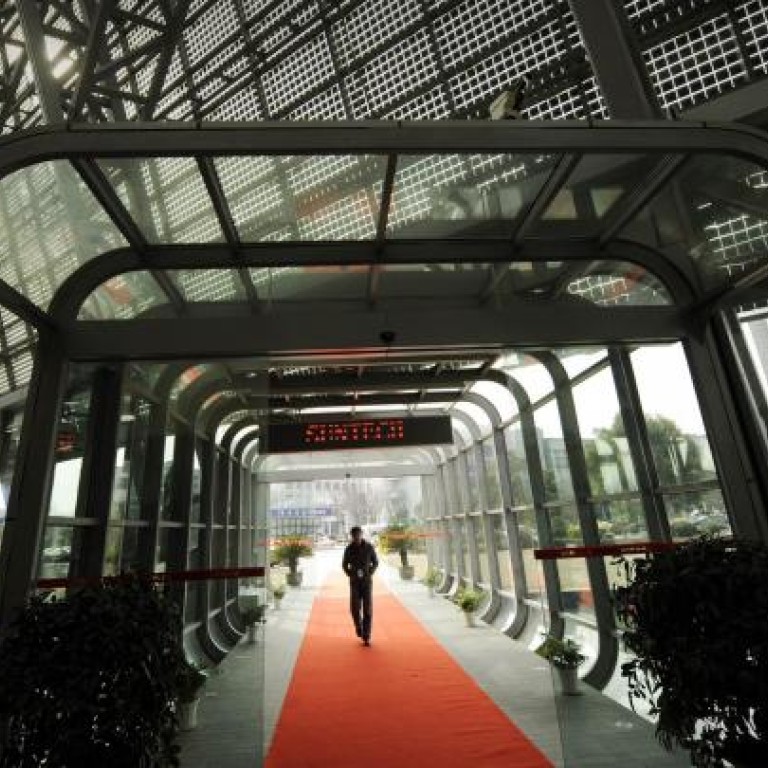
A burning paper trail
Documents filed with US regulatory authorities catalogue the financial meltdown that led former solar high-flyer Suntech into bankruptcy
Suntech Power, forced to put its Chinese solar unit into bankruptcy last month, began that slide into insolvency in 2009 when customers linked to the founder could not pay their bills and the company booked the sales as revenue anyway, regulatory filings show.

The SEC correspondence provides clues to Suntech's prospects and a road map to business practices that left the company vulnerable to a €560 million (HK$5.58 billion) fraud and a US$541 million bond default. Anyone with internet access could have learned that Suntech was booking revenue from sales to related companies with unbuilt projects in the fledgling solar industry, while also guaranteeing loans to those related firms. It relied on a former sales agent to secure one guarantee with bonds it never saw.
"Digging through SEC correspondence is one of the most important things an investor should do before investing in any company - especially in companies that are higher risk or more opaque," said short seller Carson Block of Muddy Waters, whose analyst reports starting in November 2010 triggered US$7 billion in losses for Chinese stocks in two years.
Wall Street investors funnelled US$1.28 billion into Suntech, including the bonds and US$742.6 million of stock sales in 2005 and 2009. Last month Suntech said it received a notice of default on the US$541 million bond payment on March 15 and agreed with almost two-thirds of the holders to extend the due date to May 15. Analysts, including Standard & Poor's Angelo Zino, have said US investors might take big losses.
The solar panel maker's uncollected bills from related company projects exceeded sales from those companies by a widening margin. Receivables were US$44.7 million in 2011's first quarter, against US$33.6 million in revenue booked from the companies, according to filings. Sales dried up in later quarters and uncollected bills remained, filings show.

Suntech's collapse follows bankruptcies in Germany of manufacturers such as Q-Cells SE, previously the biggest solar manufacturer. Sharp of Japan, which led solar cell-making until 2006, has been scaling back operations overseas. In 2011, Solyndra collapsed in spite of US$535 million of support from the US Department of Energy.
The SEC's first letter to Suntech was in November 2005, and its latest was April 2011. All of its letters were available to the public by mid-June 2011. There were about 38 analysts covering Suntech as of July 1, 2011, of whom 31 recommended either holding or buying the stock, data shows.
For example, Robert Stone of Cowen & Co in Boston rated Suntech "outperform" in July 2011 when its price was about US$8. He declined to say if he had read the SEC letters.
Stone said this month that the solar business was consolidating. "The process of bottoming in the industry won't necessarily be a one-quarter event," he said.
Suntech's vehicle for investing in new solar projects in the credit crisis was Luxembourg-registered Global Solar Fund, run by Javier Romero, who was once Suntech's external sales agent in Spain. Romero persuaded Shi to commit €258 million to Global Solar Fund beginning in 2008, eventually giving Suntech an 86 per cent equity stake.
Shi himself committed €32 million for almost 11 per cent of the fund, according to SEC correspondence and filings. Suntech wound up with 79 per cent of the fund after giving part of its stake to Romero as an incentive payment, according to filings.
Global Solar Fund invested in seven solar projects, mostly in southern Italy. They became the Suntech customers that had difficulty paying their bills. One of them, Solar Puglia II, required the guarantee of a €554.2 million bank loan from China Development Bank. Suntech told the SEC that Global Solar Fund backstopped the guarantee with €560 million of German government bonds.
Romero assured Suntech the bonds could be sold at any time to pay the bank if the project defaulted on its debt, Suntech wrote to the regulator. Trouble was: the German bonds Romero promised as a backstop never existed, Suntech said in December after looking for them for four months.

